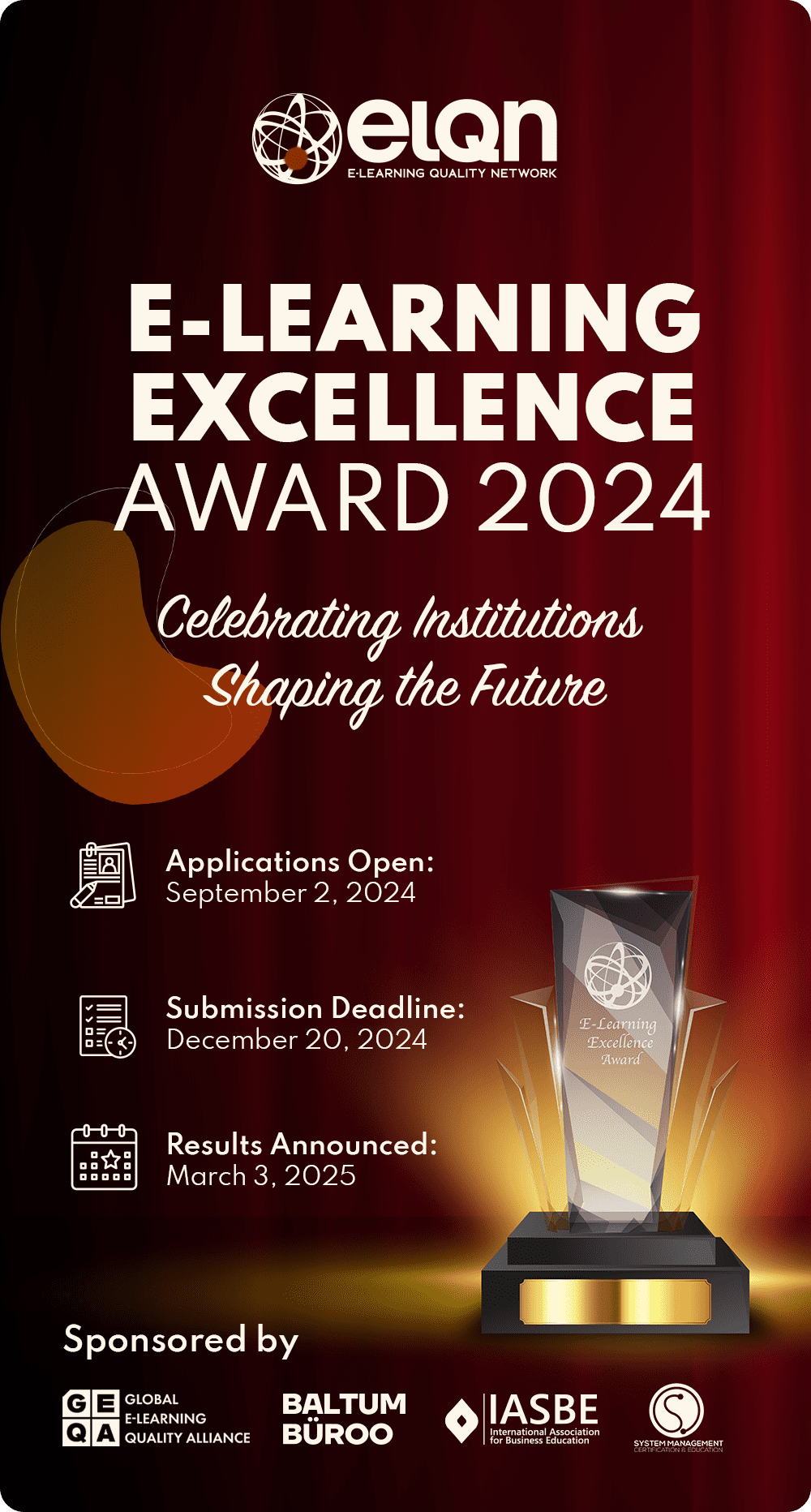In the rapidly evolving e-learning industry, institutions are continually striving to ensure that their offerings stand out in terms of quality and relevance. E-Learning Quality Network (ELQN) acknowledges this pursuit of excellence and is committed to setting a high standard. As such, we have created a set of criteria that educational institutions must meet to obtain ELQN membership. These criteria serve as a beacon, guiding institutions toward best practices, innovative teaching methodologies, and unwavering commitment to learner success.
Being a member of the ELQN isn’t just a title; it’s a testament to an institution’s dedication to delivering world-class e-learning experiences. Our criteria are designed to scrutinize every facet of an institution’s e-learning infrastructure, from course content quality to the protection of student data. In this section, we will delve deep into each criterion, providing a clear roadmap for institutions aiming for ELQN membership. We believe that by adhering to these standards, institutions can not only uplift their educational offerings but also establish trust and credibility in the vast e-learning community.
Membership Criteria for Institutions
SECTION 1: MANAGEMENT AND STAFF RESOURCES
In this section, institutions are expected to be fully registered and licensed, showcasing their legitimacy. Furthermore, a clear organizational structure is vital, demonstrating a well-thought-out hierarchy that aids in operations and decision-making. To maintain standards, institutions should also be in compliance with all relevant educational regulations at local, regional, and international levels.
SECTION 2: DIGITAL INFORMATION TRANSPARENCY
In the realm of digital information transparency, the institution must maintain a user-friendly and mobile-responsive website. This website should offer comprehensive details about courses, including syllabi and teaching staff information. Pricing structures should be transparent, devoid of hidden charges, and the institution should actively update its social media channels to engage with its audience.
SECTION 3: CERTIFICATION AND RECOGNITION
The institution should be accredited by government organizations or relevant professional bodies in accordance with the specified level of study.
SECTION 4: CONTRACTS AND POLICIES
Clarity in contracts and policies is essential. Institutions need to clearly define their terms of service, privacy policies, and refund policies. These documents must be easily accessible to users, with mechanisms in place to ensure users acknowledge these terms.
SECTION 5: LEARNING PLATFORM AND TECHNOLOGY
Utilizing a robust Learning Management System (LMS) compliant with e-learning standards is key. This LMS should be inclusive, catering to all users including those with disabilities. Proper data tracking mechanisms should be present, and the institution must also ensure secure payment methods. Additionally, systems should be in place to prevent any form of disruption.
SECTION 6: CONTENT QUALITY
High-quality content is spearheaded by qualified and experienced staff. Institutions should periodically review and update content, ensuring it remains relevant. Each course should have clear objectives, a well-structured topic breakdown, and an engaging design. Diversity and inclusivity must be at the forefront of content creation.
SECTION 7: ASSESSMENT AND FEEDBACK
Assessments play a pivotal role in education. Institutions must employ valid testing methods and ensure feedback is provided promptly. Interactive elements like quizzes and assignments should be incorporated, and opportunities for peer-to-peer learning and networking should be facilitated.
SECTION 8: SUPPORT AND COMMUNICATION
Institutions should offer various dedicated support channels to cater to user needs, ensuring inquiries are addressed swiftly. There should be a clear procedure for support and complaints, ensuring users feel heard and valued.
SECTION 9: EDUCATIONAL STAFF MANAGEMENT
Teaching staff should have relevant qualifications, verified by recognized bodies. Institutions must have approved teaching styles in place, and a comprehensive hiring procedure should be followed to maintain educational quality.
SECTION 10: DATA SECURITY AND PRIVACY
In the digital age, data security and privacy are paramount. Institutions should adhere to best data protection practices, including GDPR or equivalent regulations. They must have transparent policies detailing how personal data is managed, and users should be clearly informed about any data sharing with third parties.
SECTION 11: CULTURAL INCLUSIVITY AND RESPECT
Educational spaces should promote cultural understanding and respect. Diverse viewpoints should be encouraged, fostering an inclusive environment. Institutions need to have and adhere to a diversity, inclusion, and cultural competence policy.
SECTION 12: INTEGRITY AND ETHICS
Ethical considerations underpin the entire educational process. Institutions should have a clear Code of Conduct or Ethics Policy for all involved. Reporting mechanisms should be in place to address any violations, ensuring that integrity remains at the core of the institution's operations.
Important To Know
Implementing best practices in e-learning can be chalanging, and the steps to fully adopt these practices into an institution’s core operations might seem extensive. To streamline this process and to offer a clear pathway for institutions, we have established a structured membership hierarchy: Associate, Approved, and Accredited memberships.
Each membership level reflects the degree of adaptation of ELQN criteria and standards within an institution. An Associate membership signals an institution’s foundational alignment with our standards. Progressing further, an Approved membership indicates an advanced adaptation, while the Accredited membership marks comprehensive alignment, signifying top-tier e-learning quality.
Beyond the classifications, our primary focus remains on providing consistent support to our members. At each membership tier, we are committed to offering resources, guidance, and expertise to assist institutions in their endeavors. By doing so, we aim to ensure that every institution, irrespective of its current membership status, has a clear and feasible roadmap to achieve and maintain excellence in e-learning.
Quick Links

Explore Complete Guide
Our Partners
Latest Article
The Longitudinal Impact of AI-Driven Adaptive Learning Systems on Student Retention and Skill Mastery





